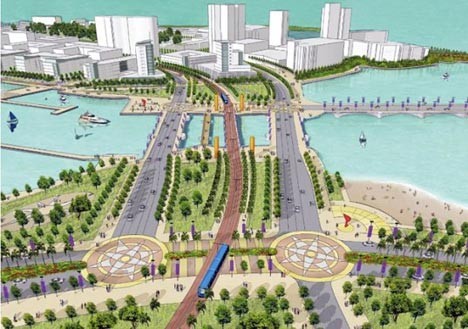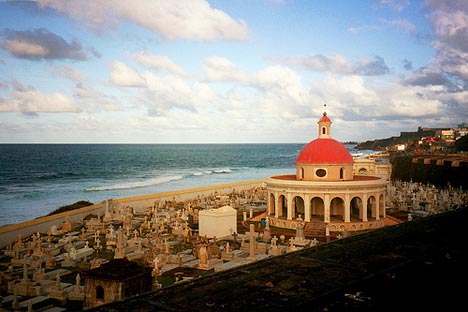
I've had a soft spot for Puerto Rico since taking a work trip there four or five years ago. I'd heard some negative things about the island, which many people seemed to think of as a third-rate part of the Caribbean, but I found much to enjoy -- the natural beauty of its coastlines and rainforests, the charming and lively capital of San Juan, not to mention the mofongo and the rum. Fending with the traffic, however, was hardly a highlight. "People complain about traffic jams, but they see congestion as a sign of progress," an environmentally minded priest told me at the time. Now it seems that attitude may be changing for the better.
San Juan, the oldest planned city in the Americas, is banning cars from large parts of its most historical area, known as the Isleta, and hopes to make the entire area walkable by 2030. It won't be a simple task. Half the island's population, some 2 million people, live and work in and around San Juan, where there are 4,300 vehicles per paved mile, according to the blog Gas 2.0, which says the plan could revitalize the area for both tourists and locals:
Isleta has experienced a rapid decline in population from over 35,000 residents in the 1950s to just over 7,000 today. A lot of space is wasted, and many beaches are inaccessible because of poor planning. By remaking Isleta as pedestrian-only, roads could be dug up and more space freed for hotels, houses, and tourism industries.
San Juan Mayor Jorge Santini's $1.5 billion Walkable City proposal also includes a $400 million investment in a light-rail line that would "run in its own right-of-way and require the conversion of several streets to pedestrian and transit malls" and coincide with the development of a waterfront promenade and the revitalization of one of the area's poorest neighborhoods, The Transport Politic writes.

The report prepared on the project highlights how well Isleta operated in the past with few cars, David Soto writes in a detailed analysis of the plan for Planetizen:
A graph shows how tramways (streetcars) ignited a rise in population and the railroad system was the peak of this until 1957 when the railroads of Puerto Rico were allowed to go bankrupt that the population of Isleta came crashing down from 34,637 (1920s-1940s) to 7,963 today. It is important to talk about the history of Isleta because Puerto Ricans don't realize how much more convenient life would be if we hadn't completely ripped out the streetcar systems and new options are needed to take away the stigma public transit carries in Puerto Rico.
The plan's integrated public transit system, mixed-use development, waterfront loop for pedestrians and cyclists, and green corridors to connect the north and south waterfronts emphasize "redefining Isleta's public realm," Soto writes. New landscaped boulevards would create "a sense of continuity and connectivity in between destinations and ultimately making Isleta more livable and enjoyable."
From Treehugger.com
